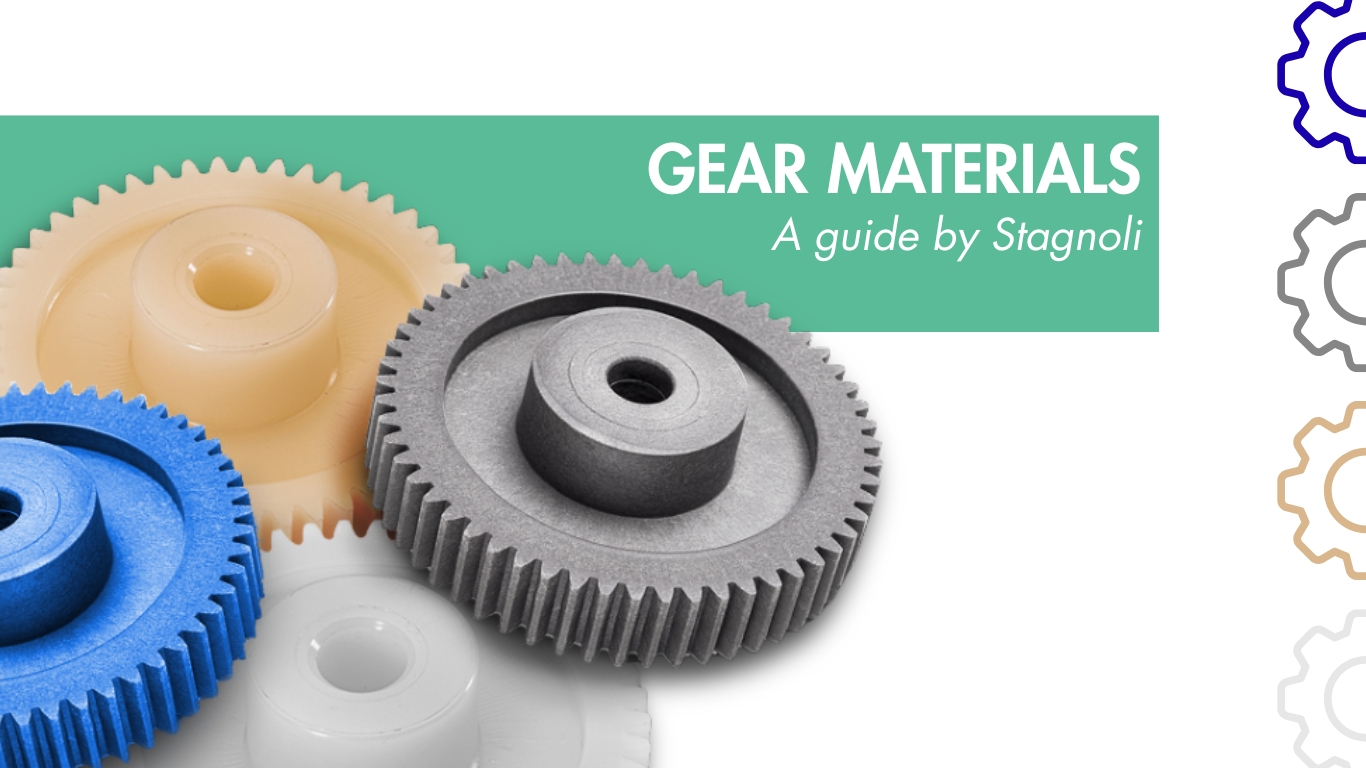Stagnoli technical guide: comparison of technopolymer gear materials
31 October 2025

The choice of materials for technopolymer gears is a crucial step to ensure high performance, quietness and long life in the power transmission sector. Each industrial application requires specific characteristics, from torque resistance to dimensional stability, or from food compatibility to the ability to work at high speeds without lubrication.
In this guide to gear materials, Stagnoli—an Italian company specialising in the design and production of technopolymer components—will compare the performance of the main materials used today: PA6 with fibreglass, PA6 with food-grade fibreglass, POM-C (acetal copolymer resin) and polyketone (PK).
PA6 with Fibreglass: Mechanical Strength for High Loads
PA6 with fibreglass is among the most popular materials for plastic gears, and it offers excellent rigidity and mechanical strength. The fibre reinforcement enables it to withstand high stresses and high torques, making it ideal for heavy-duty industrial applications.
Nevertheless, this technopolymer exhibits a certain moisture absorption and higher friction than other solutions, so it is recommended for moderate speed or lubricated systems.
Ideal applications: gearboxes for industrial environments, conveyors, automatic machines with high loads.
PA6 with Food-Grade Fibreglass: Safety and Performance in the Food Industry
The food-grade version of PA6 with fibreglass retains the same mechanical qualities as the standard material, but it is formulated in compliance with the regulations for materials in contact with food (FDA, EU 10/2011).
This makes it the perfect choice if you are looking for a high-performance material that complies with the regulations of the food and drinks sector, where hygiene and safety are essential.
Ideal applications: mixers, dosers, food packaging plants, food automation.
POM-C: Quietness, Precision and Dimensional Stability
POM-C (acetal copolymer) stands out for its low friction coefficient, low moisture absorption and high dimensional stability. It is therefore one of the most suitable materials for gears that must rotate quickly, precisely and quietly, even in damp environments.
Used by Stagnoli for high-precision components, POM-C guarantees reliable performance and a long service life.
Ideal applications: compact gear motors, actuators, medical devices, precision automation.
Polyketone (PK): The New Frontier of Technopolymers
Polyketone (PK) is the most recent development in technopolymer gear materials. This innovative polymer combines resistance to wear, self-lubrication and thermal and chemical stability, even under extreme operating conditions.
It is particularly suitable if you are looking for high-performance, low-maintenance gears with a long service life, even for dry applications.
Ideal applications: high-speed gears, industrial automation systems, transmissions in critical or non-lubricated environments.
Technical Conclusions: How to Choose the Most Suitable Material
The choice of materials for technopolymer gears depends on many factors, such as load, speed, temperature, humidity, regulatory requirements and use. Here is a summary of the main points from our guide to gear materials:
- For high loads: PA6 with fibreglass
- For food environments: PA6 with food-grade fibreglass
- For fast and silent rotation: POM-C
- For maximum chemical resistance and durability: Polyketone (PK)
With its in-depth knowledge of technopolymers and expertise in precision moulding, Stagnoli supports its customers at every stage of the selection process, offering customised technical advice and high-performance materials for durable, efficient and sustainable gears.
Contact us for a personalised consultation or to discover the complete range of technopolymer gears and high-performance materials available in our catalogue.